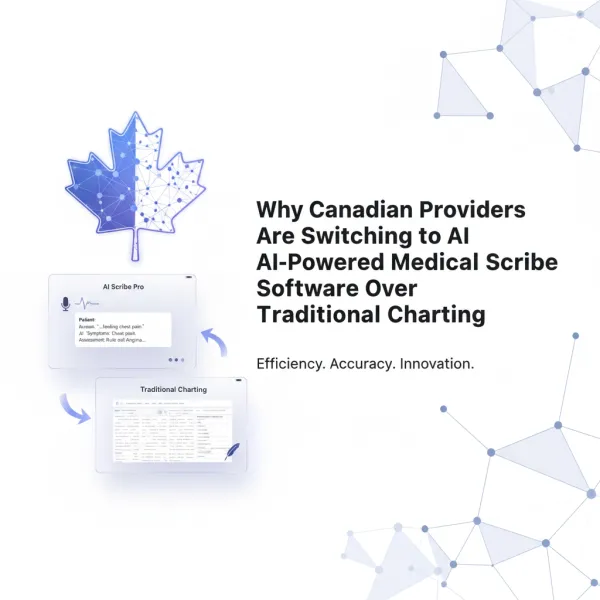Atypical investing options for doctors
It's more than just accumulating funds. Dive into unconventional strategies from health and welfare trusts to tax loss harvesting, and discover how to make your retained earnings work harder for you. Think proactive, think strategic.

Please don't tell me all you do is let your professional corporation just sit and accumulate funds. I mean, I suppose yes, you should do that. What I mean is, please don't tell me that's all you do with it.
In Canada, most physicians will set up a professional corporation (PC) for their medical practice. If you haven't, maybe check out the CPSA website, it has a heap of documentation I know you'll love to read. Then when you bill, money goes to your PC and either you take dividends or salary and then make your overhead expenses, etc. Not a whole lot is different between a medical PC and say our Scribeberry corporation. Except maybe one thing, I know you have zero time to think about what to do with your retained earnings so let's quickly go over a few options that perhaps you haven't come across yet. Here are some unconventional ways you can optimize the funds in your medical professional corporation:
1. Set up a Health and Welfare Trust
A Health and Welfare Trust (HWT) is a tax-free vehicle where your corporation can pay for out-of-pocket medical expenses for you and your family. This can be more advantageous than paying for those expenses after-tax.
If your family has $5,000 in medical expenses annually and you're in a 40% tax bracket, you'd need to earn $8,333 pre-tax to cover that. With an HWT, your corporation can directly pay those expenses, saving you that tax.
This can be pretty significant especially if you are taking care of elderly parents or have children.
2. Loan to Yourself for Investments
Instead of directly taking the money out, consider loaning the funds to yourself or a family member at the prescribed interest rate. This way, you can invest personally while your corporation gets the interest paid on the loan.
Imagine you loan yourself $100,000 from your PC to buy a rental property. If the prescribed interest rate is 5%, you'd pay your corporation $5,000 in interest annually, which becomes an income for your PC.
Ultimately this is a loan to yourself so you have the optionality to manage it the way you see fit.
3. Income-Generating Assets
Perhaps the most straight-forward option is reinvesting the retained earnings into income-generating assets. Think of it like this: If you had a garden (your PC), would you just let the soil sit there, or would you plant seeds (assets) that could grow and provide fruits and vegetables (returns) over time? OK, corny example...ahh you see what I did there?
Let's say you invest $50,000 of your retained earnings into an asset that gives an annual return of 5%. In one year, that's a passive income of $2,500, without you lifting a finger. And that's just one year! Compound that over several years and the numbers get quite exciting.
Check out our last post on why compound interest is the most boring thing you should be paying attention to.
4. Retirement-based Investment Products
For physicians nearing retirement or those thinking ahead, Individual Pension Plans (IPPs) can be a solid choice. IPPs are essentially defined benefit pension plans that can be set up for the owners, key employees, and even family members employed by the corporation. These plans allow for larger annual contribution limits compared to RRSPs, especially as you get older. The catch? They're a bit more complex to set up and require consistent contributions. Plus you have to be 45 or older to contribute. However, in the long run, they can provide a stable and predictable retirement income. And the kicker...contributions made by your PC are tax deductible, which can be a lovely bonus for tax planning.
Another option is universal life insurance or whole life insurance which can offer you a way to grow your money tax-deferred. Consider the example scenarios below:
Tax-Deferred Growth
Scenario: Dr. Smith takes out a Universal Life insurance policy and contributes more than just the cost of insurance into it. The additional contribution goes into an investment component that grows over time.
Benefit: Any returns on these investments grow tax-deferred within the policy. This means that, unlike an investment account outside of a life insurance policy, Dr. Smith isn't paying annual taxes on dividends, interest, or capital gains as they accrue. Over time, this can lead to significant compound growth.
Tax-Free Loans Against Policy's Cash Value
Scenario: Several years later, Dr. Smith wants to open a new clinic. Instead of liquidating her other investments and potentially paying capital gains tax, she borrows against the cash value of her Universal Life insurance policy.
Benefit: This loan isn't considered taxable income because it's technically a debt—even if it's her own money she's borrowing. She can use this money for the clinic, and the policy's cash value can continue to grow on the remaining amount. If she doesn't repay the loan, the insurance company will simply subtract the loan amount (plus any interest accrued) from the death benefit when the claim is made.
5. Tax Loss Harvesting Strategy
One often overlooked strategy is tax loss harvesting, a method used to minimize capital gains taxes. In essence, if some of your investments within the corporation have experienced a decline (<cough> crypto), you can sell them to realize a loss, which can then offset other capital gains. This way, your overall tax liability on investments can be reduced.
Imagine your corporation has two investments. One has a gain of $10,000, and the other has a loss of $8,000. By selling both, the net capital gain is reduced to $2,000, leading to a significantly lower tax compared to if only the profit-making asset was sold.
Note: This strategy requires precise timing and a deep understanding of the market conditions to be effective. Moreover, there are specific rules to avoid "superficial losses," so it’s crucial to consult with a tax professional before employing this strategy.
Conclusion
Your professional corporation isn't just a vessel to hodl funds. Think of it as a dynamic entity that can grow, adapt, and serve your financial objectives in multiple ways. By being proactive and strategic, you can unlock a myriad of benefits that not only secure your present but also fortify your future.
We hope you found this useful. If you didn't, you can go straight to heck.

Disclaimer: The information provided in this article is for general informational purposes only and should not be construed as financial, legal, or medical advice. Readers should consult with a qualified professional before making any decisions or taking any actions based on the content herein. The author and the publisher expressly disclaim any liability arising from any inaccuracies or omissions in this article or from the use of or reliance on its content. Please do your own research and consult with licensed professionals.



